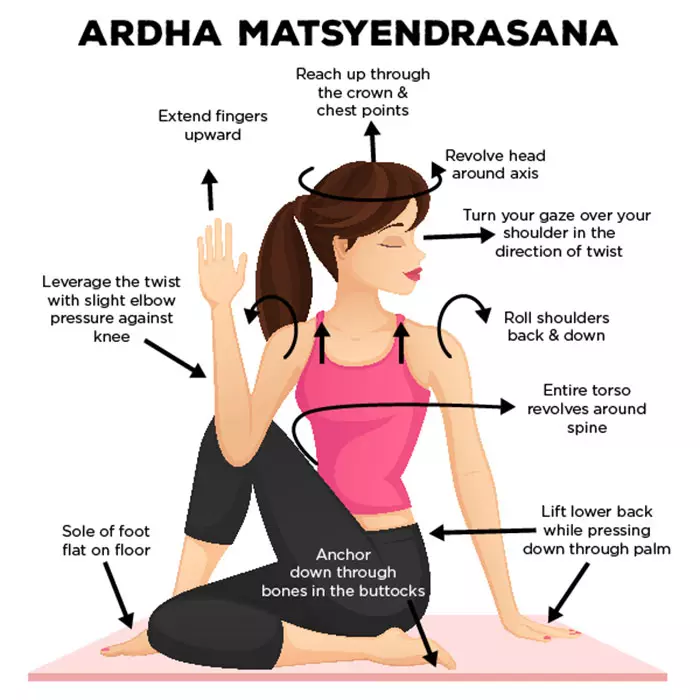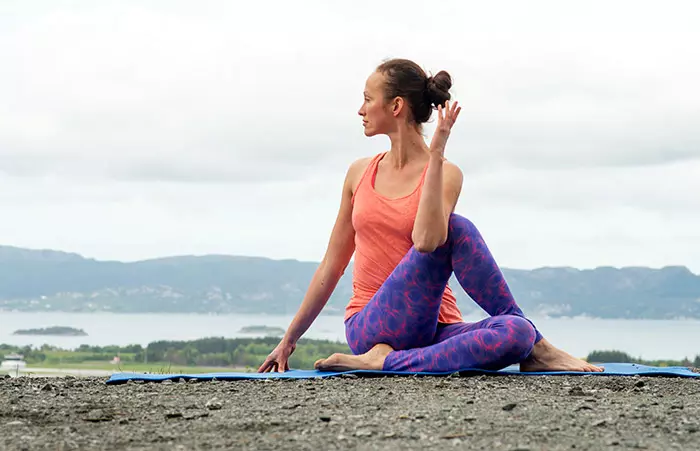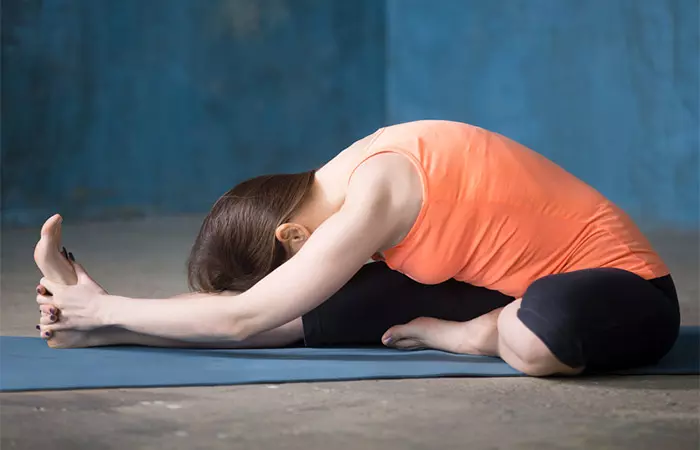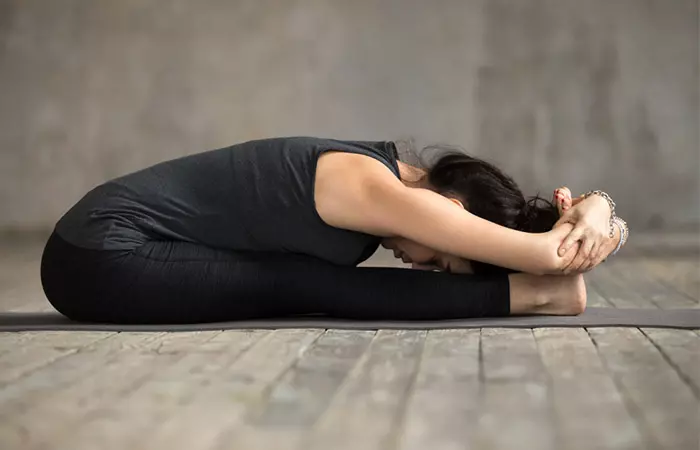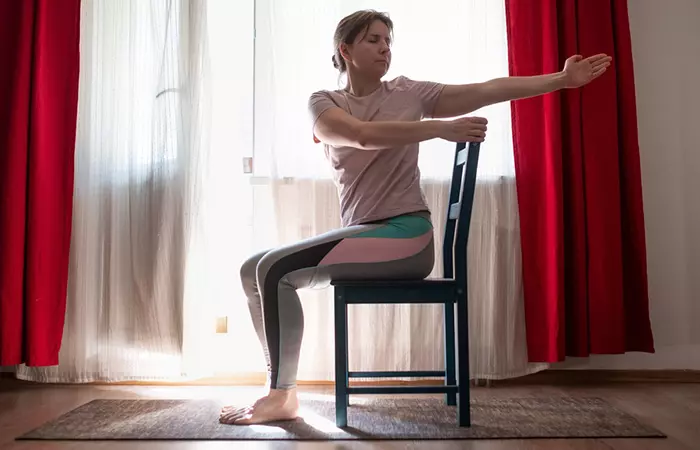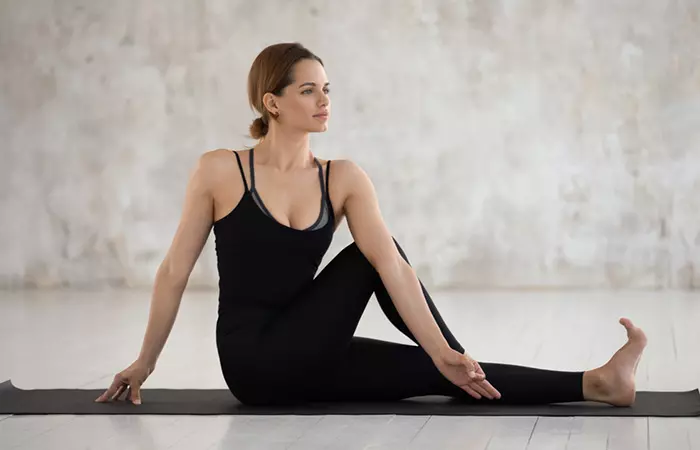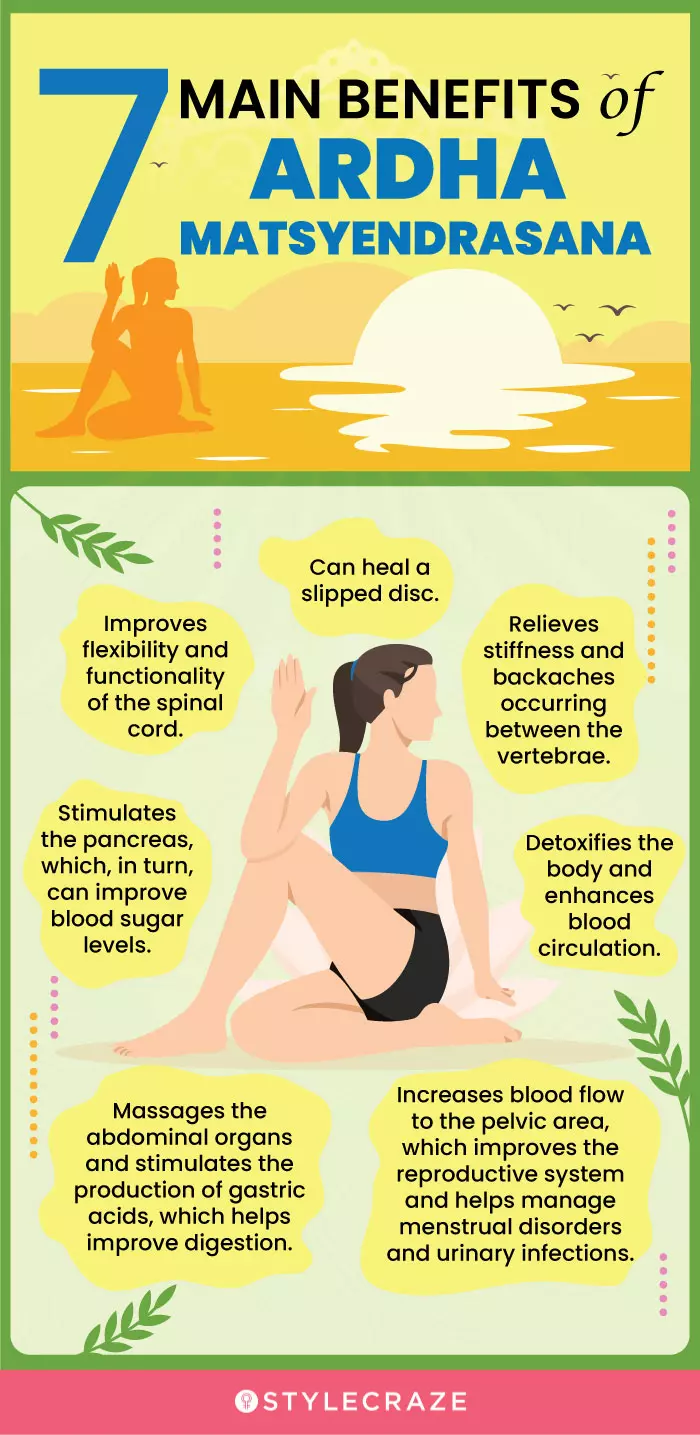The yogi Matsyendranath is honored with the name of this asana. The name Ardha Matsyendrasana is derived from the Sanskrit words “ardha” (half), “matsya” (fish), “Indra” (king), and “asana” (posture). Vakrasana is another name for this asana. In Sanskrit, ‘Vakra’ signifies twisted. Half Lord of the Fishes Pose, and Half Spinal Twist are two more names for this asana. It is a sitting spinal twist that may be done in various ways. This is one of the twelve basic asanas taught in Hatha Yoga classes. Continue reading to know more.
Everything You Need To Know About The Ardha Matsyendrasana
What You Should Know Before You Do This Asana
This asana must be practiced either first thing in the morning or at least four to six hours after a meal. Your stomach and bowels must be empty when you practice this asana. The food must be digested so that there is enough energy to expend during the practice.
Level: Basic Style: Hatha Yoga Duration: 30 To 60 Seconds Repetition: Do it on the right side first and then on the left Stretches: Hips, Shoulders, Neck Strengthens: Spine, Digestive System, Urinary System, Reproductive System
How To Do Ardha Matsyendrasana
Prashant, a vlogger, shared step-by-step guidance on practicing ardha matsyendrasana, a seated twisting yoga pose. He emphasized the importance of a straight spine and flexible hips to prepare the body for the pose. While putting his one leg across the other leg, he noted, “When I drop the buttock, I’m not rounding my back. Can you see that I’m still maintaining the extension of my spine, and at the same time, I’m descending my right buttock down like this (i).”
Precautions And Contraindications
Now that you know how to do the seated half spinal twist pose, let’s have a look at few points of caution you must keep in mind while you do this asana.
Beginner’s Tips
The many hand variations in this pose can make it quite hard for beginners to adapt. First of all, make sure you sit on a blanket and practice this yoga twist pose. Next, before you try the hand and arm variations, just wrap one arm around the raised leg, and hug your thigh to your torso. With practice, you can start trying other variations.
Advanced Pose Variations
This is an advanced pose you can try to deepen the stretch.
Benefits Of The Half Spinal Twist
These are some amazing benefits of the Ardha Matsyendrasana.
The Science Behind The Vakrasana
After a tough, challenging workout, a twist like the Ardha Matsyendrasana can be extremely relaxing. But this pose is also fortifying and has a whole lot of amazing benefits. So don’t let yourself get too complacent as you do this asana. According to the 2017 National Health Interview Survey, yoga was the most common complementary health and wellness practice among Americans, with an adoption rate of 14.3% that year. Women (19.8%) were more likely than men (8.6%) to engage in yoga within the past 12 months. Yoga was more than twice as common among adults aged 18-44 (17.9%) compared to those aged 65 and over (6.7%). Getting into the pose is easy, but the real goodness is in the action of twisting. When you contract your torso muscles and elongate and rotate your spine while deepening your breath, you are greatly benefitted. Be conscious and work towards gaining the benefits of Ardha Matsyendrasana step by step. This asana will help you stretch your outer hips and thighs. It also opens up the front of your shoulders and chest as it builds strength along the sides of your body. The twisting pose will keep your spine healthy as it squeezes and rehydrates the spongy discs that lie between the vertebrae. These tend to get compressed as you age. Try to avoid slouching and slumping during this asana – it will limit the degree of spinal rotation that you are capable of. For a deep twist, you must lengthen your spine and make enough space between your vertebrae. Use your breath to deepen the stretches. Inhale and lengthen yourself, and exhale and twist deeper. If this asana is practiced with dedication, this deep-seated twist can confront reality and let you know what is really going on in your hips, spine, and even your mind. The seated posture lets you take account of a bloated stomach, and also if your breath is constricted or muscles are stiff.
Preparatory Poses
Baddha Koṇāsana Janusirsasanai A head-to-knee pose that stretches the entire body from the ankles to hips along with the back. Virasanai A kneeling asana that stretches the thighs, knees, and ankles to improve digestive health and functioning. Bharadvaja’s Twist Supta Padangusthasana
Follow-Up Poses
Paschimottanasana Janusirsasana Getting your body into a deep twist such as this asana is not only beneficial but also relaxing. Once you release the twist, you will know what you feel mentally, physically, and emotionally. While the Ardha Matsyendrasana is easy to perform, it may be challenging for people with limited flexibility. Here are some modifications you can try in such a case.
Ardha Matsyendrasana Modifications
Chair Ardha Matsyendrasana
This modification is perfect for those who cannot sit on the floor due to physical limitations.
Extended Ardha Matsyendrasana
This modification is perfect for those who have limited flexibility. What is the difference between Matsyendrasana and Ardha Matsyendrasana? Poorna Matsyendrasana is the full spinal twist, and the back foot rests on the thigh, like padmasana. In Ardha-Matsyendrasana, the back foot rests on the floor. How many times should I do Ardha Matsyendrasana? Ardha Matsyendrasana can be done daily. Do three reps, holding each briefly. What are some common breathing techniques used in Ardha Matsyendrasana, and how do they enhance the benefits of the pose? Hold the position and take gentle but long breaths. As you come back to the starting position, breathe out and relax. This improves the quality of your breathing. Learn how to do Ardha Matsyendrasana with this easy-to-follow video. Check it out and master this sitting half spinal twist to improve your flexibility, reduce stress, and boost your general well-being. https://www.youtube.com/watch?v=W4rTLSu3Qo0
